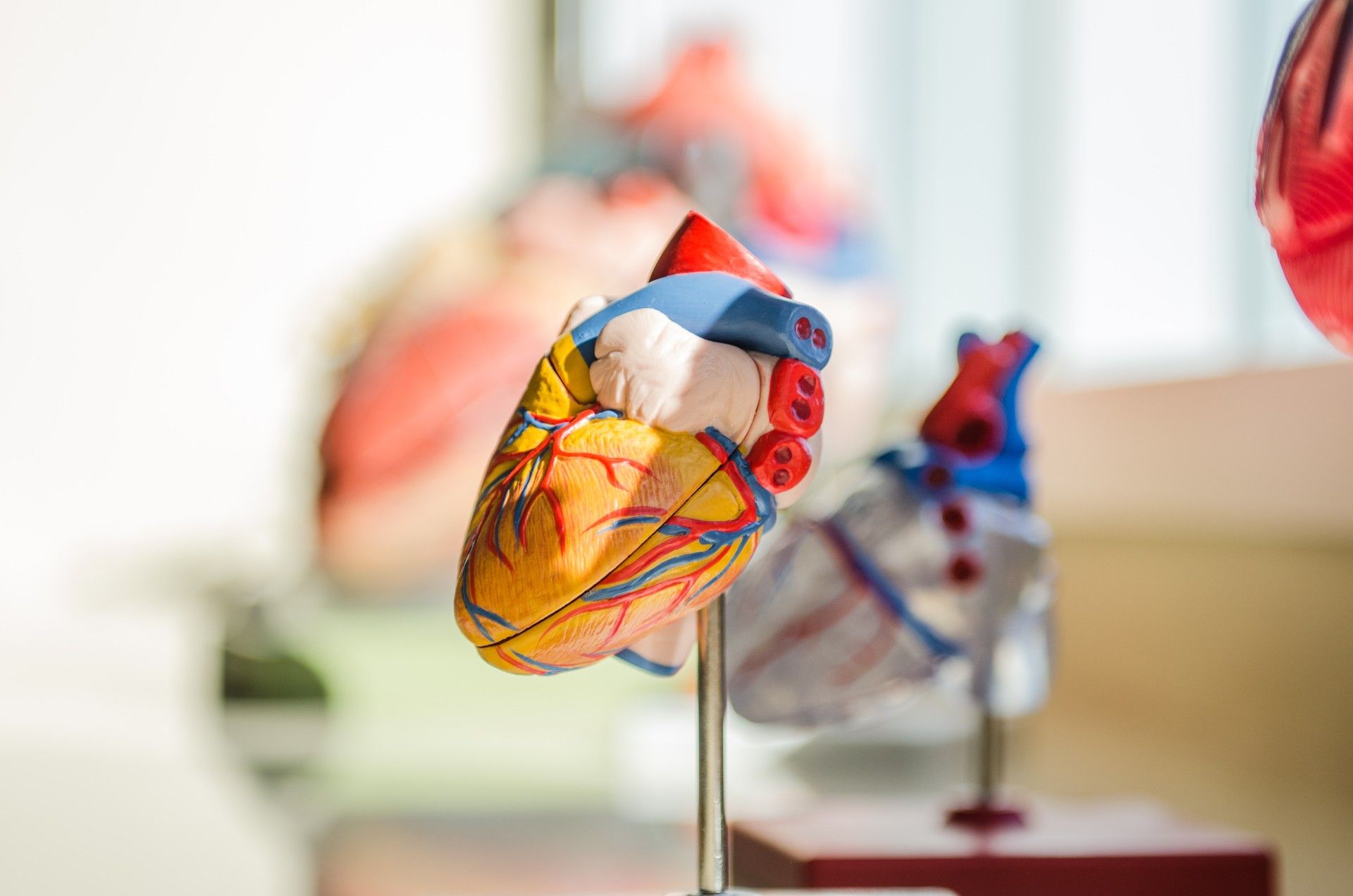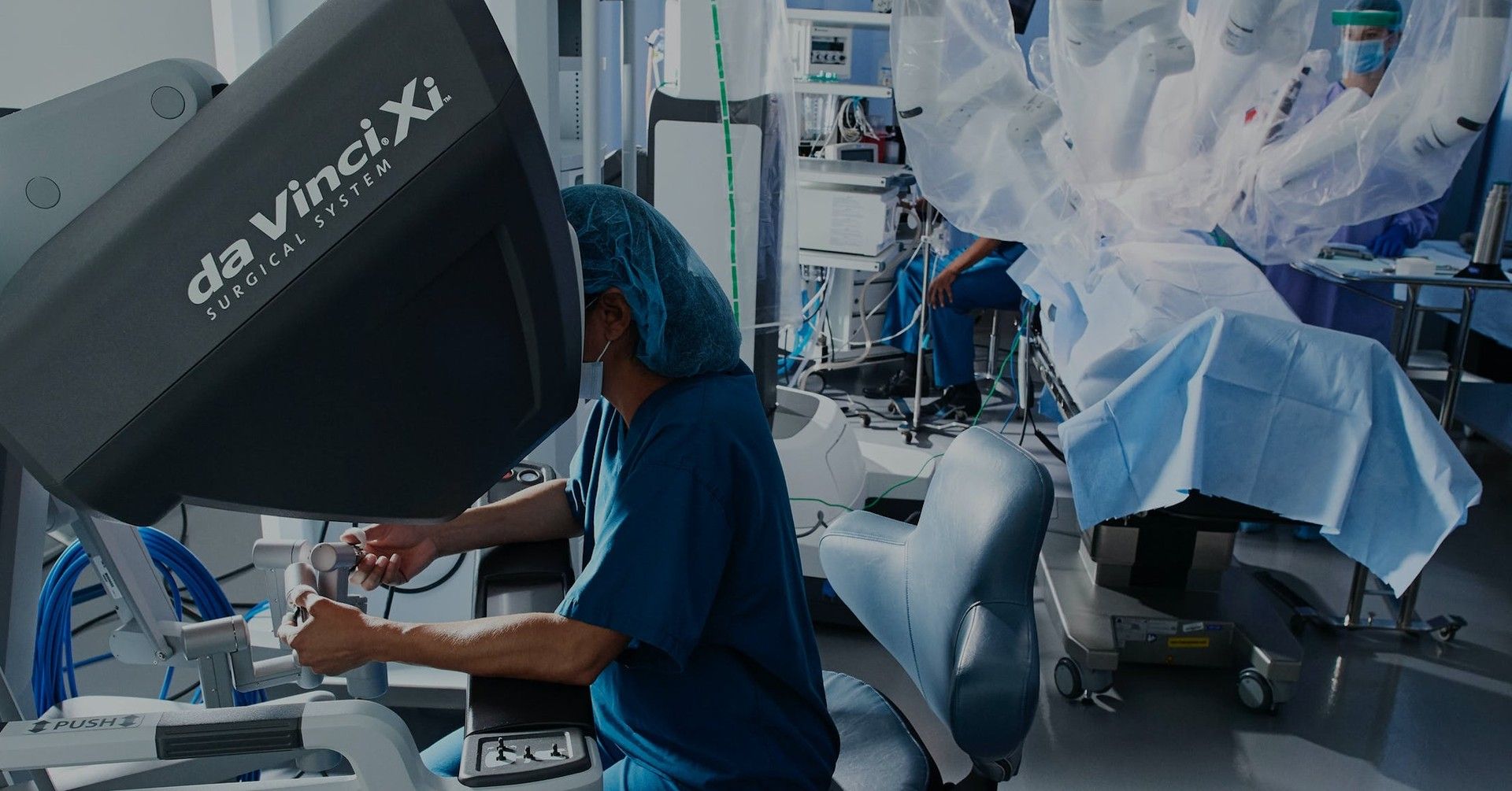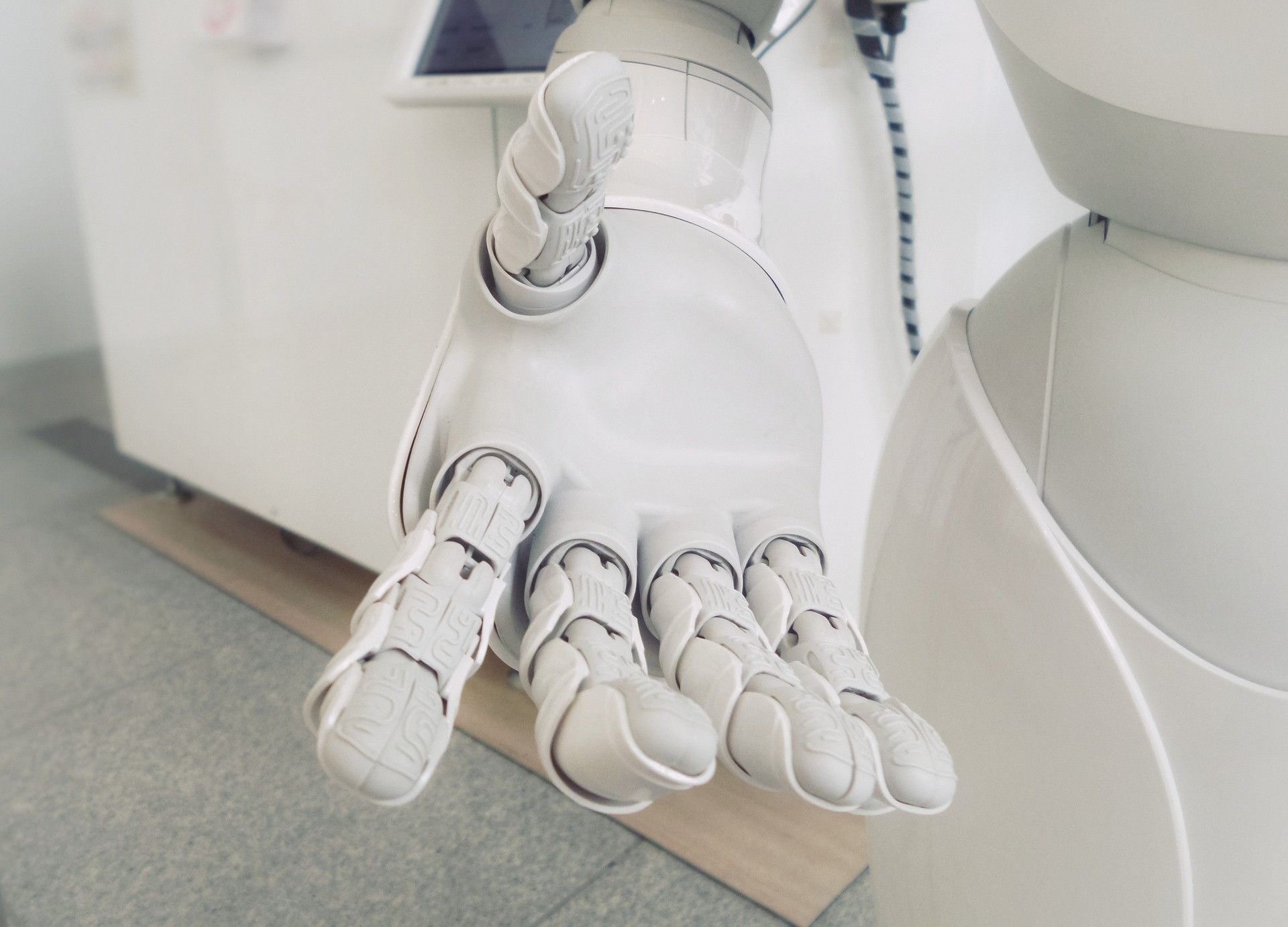AI has become integral to our daily lives, and now the science world is exploring the potential of artificial intelligence in surgery. From virtual assistants like Siri and Alexa to marketing chatbots, self-driving Teslas, and advanced language models like ChatGPT, AI technologies have seamlessly integrated into our routines, and now it is aiming for the revolution in medical practices and patient care. AI-powered healthcare solutions are transforming the way diagnoses are made and treatment plans are personalized. These technologies leverage sophisticated algorithms to process vast amounts of medical data, helping healthcare professionals make more accurate decisions.
One of the areas where AI shows immense promise is in medical diagnostics. By leveraging machine learning algorithms, AI systems can analyze medical images, such as X-rays, MRIs, and CT scans, with remarkable accuracy and speed. This can help radiologists and other specialists identify abnormalities, tumors, and other critical markers that may have otherwise gone unnoticed. Early detection of diseases through AI-enabled diagnostics holds the potential to significantly improve patient outcomes, increase survival rates, and reduce the burden on healthcare systems.
Moreover, AI can contribute to the development of personalized medicine, where treatment plans are tailored to an individual’s unique characteristics, including genetic makeup, lifestyle factors, and medical history. By analyzing vast datasets and applying predictive analytics, AI algorithms can identify optimal treatment options and predict potential responses to specific therapies. The integration of artificial intelligence in surgery has the potential to optimize treatment efficacy, minimize adverse effects, and improve patient satisfaction.

How can scientists utilize artificial intelligence in surgery?
The integration of artificial intelligence in surgery holds immense promise. By swiftly and efficiently analyzing vast amounts of data, the usage of artificial intelligence in surgery is able to address key challenges in the healthcare system.
In modern healthcare data generation is abundant and AI emerges as a valuable ally, capable of aggregating and synthesizing this wealth of information to deliver targeted outputs that prove invaluable for surgeons. From the initial consultation stage to post-operative management, AI has the potential to reshape every aspect of surgical practice.
The integration of artificial intelligence in surgery opens up a world of possibilities that are too numerous to fully capture in a single description. Pre-surgery, AI algorithms can provide predictive analyses, assisting in early disease detection. This early detection not only leads to faster interventions but also holds the promise of improved outcomes and prognoses.
Moreover, AI technology empowers doctors to delve deep into patients’ lab reports, scans, and medical records, enabling the development of highly customized treatment plans at a micro level. In operations, AI algorithms can act as a guiding hand, augmenting decision-making processes by analyzing real-time data from multiple sources and offering valuable feedback to surgeons. This integration of artificial intelligence in surgery not only enhances decision-making but also helps prevent unwanted outcomes.
Beyond the confines of the hospital, AI continues to play a vital role. By evaluating data from patient monitoring systems, AI can detect potential complications that may arise between post-operative visits.
AI-based platforms can also serve as the first line of communication for patients, addressing minor concerns or frequently asked questions. Such continuous interaction ensures smoother recoveries and an improved overall patient experience.

Robotics in surgery
The field of medicine has always been characterized by constant innovation and evolution, striving to enhance patient outcomes and overall healthcare. In recent years, significant advancement has emerged with the integration of artificial intelligence (AI) tools into various medical practices, including diagnostics, treatment planning, and even surgical procedures. Notably, the area of robotic surgery has experienced remarkable growth, as AI-powered systems now assist surgeons in performing intricate operations with unprecedented precision and accuracy.
Robotic surgery, or robot-assisted surgery, utilizes computer-controlled robotic systems to execute surgical procedures, either partially or entirely. These systems typically consist of a surgeon’s console, from which the surgeon manipulates robotic arms, and a patient-side cart where the instruments are positioned. Through a high-definition, 3D camera, the surgeon gains a visual perspective of the surgical site and employs hand and foot controls to guide the robotic arms, enabling meticulous and controlled movements during the procedure.
The da Vinci Surgical System stands out as one of the most renowned robotic surgery systems, having been employed in over six million surgeries worldwide since its introduction in 2000. This system has demonstrated significant success in urology, gynecology, and general surgery, showcasing advantages such as reduced blood loss, shorter hospital stays, and faster recovery times for patients.
With the integration of artificial intelligence in surgery, especially into robotic surgery systems, the field holds immense potential for further transformation, with numerous exciting developments already underway.

For instance, researchers at the University of California, Berkeley have designed the Berkeley Autonomous Robot for the Operating Room (BARO), an AI-powered robotic system. BARO employs machine learning algorithms to analyze surgical data, learn from expert surgeons’ techniques and movements, and execute surgical tasks with remarkable accuracy and precision.
Another promising advancement lies in AI-powered surgical planning tools, which aid surgeons in determining the optimal approach for a specific procedure by analyzing patient-specific data and generating 3D models of the surgical site. By integrating artificial intelligence in surgery, these tools offer real-time feedback during surgery, alerting the surgeon to potential complications or suggesting alternative approaches based on the evolving situation.
Apart from enhancing procedural precision, AI tools also contribute to reducing the risk of human error in the operating room. Notably, researchers at the Massachusetts Institute of Technology (MIT) have developed a system in artificial intelligence in surgery capable of monitoring surgical instrument movements during a procedure and providing real-time feedback to the surgeon. This technology helps prevent mistakes, ensuring the surgery is conducted as safely and effectively as possible.
Companies have already started to use AI in healthcare
Many companies already started to employ AI systems in various aspects of healthcare, catering to patient-oriented, clinician-oriented, administrative, and operational needs. Their applications range from utilizing video, audio, and behavioral data to better understand the connection between patients, disease, and treatment, to improving diagnostics for lung cancer, providing voice-powered care assistance, and creating accessible and affordable health systems through natural language processing (NLP) and AI.
Some companies also offer bot assistants to answer clinical questions, transcribe case notes, and organize files. Furthermore, advanced machine learning with computational genomics is utilized to expedite drug discovery processes and reduce associated time and costs for patients.
The table below represents just a few examples of the many companies globally that are actively involved in AI applications within the medical sciences.
| Company | Purpose |
| AiCure | Uses video, audio, and behavioral data to better understand the connection between patients, disease and treatment |
| Aidence | AI for radiologists: improving diagnostics for the treatment of lung cancer |
| Babylon Health | Uses NLP and AI to create internationally accessible and affordable health system for all |
| Suki | Voice enabled digital assistant for physicians |
| Insitro | Uses advanced machine learning with computational genomics to reduce the time and cost associated with drug discovery for patients |
| Bot MD | Bot assistant: answers clinical questions, transcribes dictated case notes and automatically organizes images and files |
It is hard to describe how fast the medical world is evolving, yet the implementation of artificial intelligence in surgery faces limitations and challenges.
What can AI improve in the medical field?
AI has the potential to bring significant improvements to the medical field in various ways. Some of the key areas where AI can make a positive impact include:
- Diagnosis and decision-making: AI can assist in diagnosing diseases and conditions by analyzing medical images, laboratory results, and patient data. It can help healthcare professionals identify patterns and anomalies that may be difficult to detect with the naked eye, leading to more accurate and timely diagnoses.
- Treatment planning and personalized medicine: AI algorithms can analyze large amounts of patient data, including medical records, genetic information, and lifestyle factors, to develop personalized treatment plans. This can lead to more effective and tailored interventions, optimizing patient outcomes.
- Drug discovery and development: AI can accelerate the process of discovering new drugs by analyzing vast amounts of biomedical data, identifying potential targets, and predicting the efficacy of drug candidates. This can streamline the drug development process, making it faster and more cost-effective. This type of addition to artificial intelligence in surgery is a perfect chance to maintain the post-operative wellness of the patients.
- Remote monitoring and telemedicine: AI-powered devices and applications enable remote monitoring of patients’ vital signs and symptoms, allowing healthcare providers to track their health conditions and intervene when necessary. Telemedicine platforms equipped with AI capabilities can provide virtual consultations, expanding access to healthcare services and improving patient convenience.
- Precision surgery and robotic assistance: AI can enhance surgical procedures by providing real-time feedback and guidance to surgeons. Robotic systems equipped with AI algorithms can assist in performing complex surgeries with higher precision and accuracy, reducing the risk of errors and improving patient outcomes.
- Disease prediction and prevention: By analyzing patient data and risk factors, AI algorithms can help identify individuals at high risk of developing certain diseases. This enables proactive interventions and preventive measures to reduce the incidence and progression of diseases.
- Health system optimization: AI can optimize healthcare operations and resource allocation by analyzing large datasets, predicting patient flow, optimizing staff scheduling, and improving inventory management. This can enhance efficiency, reduce costs, and improve overall healthcare delivery.
While AI holds great promise, its implementation should be done with careful consideration of ethical, privacy, and regulatory concerns to ensure patient safety and maintain trust in the healthcare system.
Human medicine is not the only area where AI can improve something
The medical field is of course not limited to human medicine. AI technologies, which have also started to touch the lives of our cute friends, brought a smile to our faces with the story of Twitter user @peakcooper’s dog’s recovery in March 2023.
Thanks to ChatGPT, Open AI’s chatbot that redistributed the cards in the world of technology, our little friend was saved from a very bad situation due to a misdiagnosis. When Cooper couldn’t see any improvement in his dog despite the treatment, he brought the issue to GPT-4 and told the artificial intelligence about his dog’s test results. The AI successfully differentiated between tick-borne disease and Immune-Mediated Hemolytic Anemia (IMHA), two symptomatically very similar diseases, and saved Sassy’s life.
You can read the whole story in the tweet series below.
I noticed her gums were very pale, so we rushed back to the vet.
The blood test revealed an even more severe anemia, even worse than the first day we came in.
The vet ran more tests to rule out any other co-infections associated with tick-borne diseases, but came up negative 2/
— Cooper (@peakcooper) March 25, 2023
My educational background is based on veterinary medicine and I would like to make a self-criticism here. You cannot always give your patient the attention he/she deserves when he/she comes to your clinic after a long day and this unfortunately has the potential to lead to loss of life, which is defined as human error in medicine. Having a tireless assistant with you is the only thing that can reduce the share of human error to almost zero. The use of artificial intelligence in surgery will certainly reduce the margin of error in such a critical area.
Challenges in the application of artificial intelligence in surgery
As mentioned before, artificial intelligence (AI) has found its way into various fields of medicine and healthcare, including surgery, but its implementation is not without limitations and challenges. It is crucial to shift our mindset from reactive to proactive when it comes to addressing the drawbacks associated with new technology.
Data availability
Collecting data is a crucial initial step in building an AI system. To develop effective models, a significant amount of high-quality data is required. However, data collection raises concerns related to patient privacy and recent incidents of data breaches by major corporations. Technological advancements have increased computational power and data storage capabilities. Technologies like facial recognition and gene analysis enable individual identification from a pool of people.
New artificial intelligence can diagnose a patient using their speech
However, patients and the public have the right to privacy and the choice to determine what data they share. Data breaches pose risks of insurance companies accessing patient data, potentially resulting in the denial of medical insurance based on genetic composition. Patient privacy restrictions limit the availability of data, leading to limited model training and a failure to explore the full potential of the models therefore it is a hindering factor in the integration of artificial intelligence in surgery.
Creating biased models
Artificially intelligent systems are trained using a portion of the collected data (training data set), with the remaining data reserved for testing (testing data set).
If the collected data is biased, targeting specific races, genders, or age groups, the resulting model will also be biased. It is crucial that the collected data represents the intended population without bias.
Data preprocessing
Even with unbiased data, it is possible to create biased models. Raw data often contains errors due to manual data entry or other factors.
Preprocessing is required to prepare the data for algorithm training. However, care must be taken during data preprocessing to avoid introducing biases into the data set.

Model selection
With numerous algorithms and models available, selecting the most suitable one for a specific task is essential. The process of model selection plays a critical role in the integration of artificial intelligence in surgery. Biased models are often oversimplified and fail to capture the trends present in the dataset.
Presenting biased models
Users of AI systems must have a basic understanding of how models are built to interpret the output effectively and determine its applicability. Metrics such as:
- Accuracy
- Precision
- Recall
- F1 score
- AUC score
Are used to evaluate model performance.
However, not all metrics are suitable for every problem. Users need to ensure that the appropriate metrics are presented and not just those with the highest scores.
Fragmented data
One limitation of AI applications, especially artificial intelligence in surgery, is the inability to seamlessly transfer models designed and deployed by one organization to another without recalibration.
Due to privacy concerns, data sharing between healthcare organizations is often limited, resulting in fragmented data and reduced model reliability. That is why the usage of artificial intelligence in surgery is not common as of 2023.
Blackboxes
AI systems are often regarded as blackboxes due to the complexity of the underlying mathematical algorithms. Efforts are being made to make models more accessible and interpretable, but there is still progress to be made in this area.
Considerations on artificial intelligence in surgery
The integration of AI with interventional and surgical specialties raises numerous ethical concerns, particularly regarding bias and accountability. These ethical issues become even more significant as we move towards fully autonomous operations. Self-directed AI-initiated responses or interventions present particular ethical challenges. As previously discussed, datasets used to train AI systems can be inherently biased, which can lead to diverse downstream impacts in different patient subgroups. This means that interventions and outcomes may vary among patients.
To illustrate this, let’s consider cosmetic surgery. AI can now predict an individual’s age by analyzing facial features and suggest surgical steps to reduce signs of aging. In South Korea, where cosmetic surgery is prevalent, surgeons utilize motion-sensor surgical instruments that collect real-time data and guide them in making precise adjustments to improve outcomes. However, these AI algorithms carry inherent biases. In 2013, the Miss Korea pageant sparked controversy due to the resemblance of facial features among contestants who had undergone cosmetic surgery. Beauty is subjective, and when artificial intelligence dictates aesthetic standards, the complexity deepens. It is evident that such AI algorithms cannot be universally applicable across different communities and ethnicities.

In a surgical environment, there is much at stake. If an AI-trained robot malfunctions or loses control during a procedure involving intricate tasks like dissection, suturing, or manipulating catheters in the heart, it can have catastrophic consequences. The extent of AI involvement directly correlates with the ethical concerns at hand. Training robots with datasets encompassing thousands of procedures performed in diverse conditions, sites, and by multiple operators becomes crucial in mitigating harm. However, when harm does occur, determining responsibility becomes a challenge. Should it lie with the company that developed the autonomously operating robot, the surgeon, the hospital, or those who contributed to the dataset?
AI is unable to replicate the decision-making process surgeons rely on, which often involves gut instinct and draws upon unquantifiable clinical experience. Moreover, a single surgical operation entails thousands of intricate steps, including cutting, dissecting, connecting, burning, cooling, clamping, ligating, and suturing. In the foreseeable future, robots will only serve as assistants. While they may become more proficient in basic functions, the addition of more complex layers will require careful consideration and implementation, as the surgeon’s expertise and judgment remain irreplaceable.
Misconceptions about AI in healthcare
Despite all these concerns, there is a great deal of optimism surrounding the potential of AI to revolutionize the healthcare sector in various ways, encompassing patient diagnosis, prognosis, drug discovery, and assisting physicians to provide a more personalized experience for patients. This optimism has been fueled by the successful applications of AI in healthcare. However, alongside this, there are unrealistic expectations about the capabilities of AI and how it will shape the future of the healthcare industry.
Dr. Anthony Chang, a speaker at the 2019 Society for Artificial Intelligence in Medicine (AIME) conference, delivered a lecture titled “Common Misconceptions and Future Directions for AI in Medicine: A Physician-Data Scientist Perspective” in Poznan, Poland. In his lecture, he addressed two prevailing myths related to the implementation of AI in healthcare.
Myth 1: AI will replace clinicians
While the future cannot be predicted with certainty, physicians who possess an understanding of the role of artificial intelligence in surgery are likely to have a competitive edge in their careers.
For example, the American College of Radiology (ACR) posted a job advertisement for a Radiologist, outlining two requirements:
- Must be American Board of Radiology Certified
- Must be an enthusiastic, well-trained radiologist excited about a future where radiologists are supported by world-class AI and machine learning
Myth 2: Programming knowledge is essential for utilizing AI
AI adoption in any field involves multiple components, and programming is just one aspect. For artificial intelligence in surgery to continue growing, developing, and succeeding, physicians and data scientists must collaborate closely to construct meaningful AI systems. Physicians need to comprehend AI’s potential and assess how it can enhance their roles, effectively communicating this information to data scientists who can then build the AI system.
Collaboration does not end there. Physicians and data scientists must jointly determine the available data for model training, analyze and interpret the model’s performance, requiring ongoing collaboration. Additionally, there is a growing trend of AI software becoming more accessible and user-friendly, such as visual tools like Google’s Teachable Machine, which enable building visual classifiers without coding skills.
By harnessing the power of AI, healthcare can transition from a one-size-fits-all approach to a personalized and patient-centered model, improving health outcomes and enhancing the overall healthcare experience for individuals. Artificial intelligence in surgery and healthcare will be the technology that will open the doors to the bright future that awaits us all.





